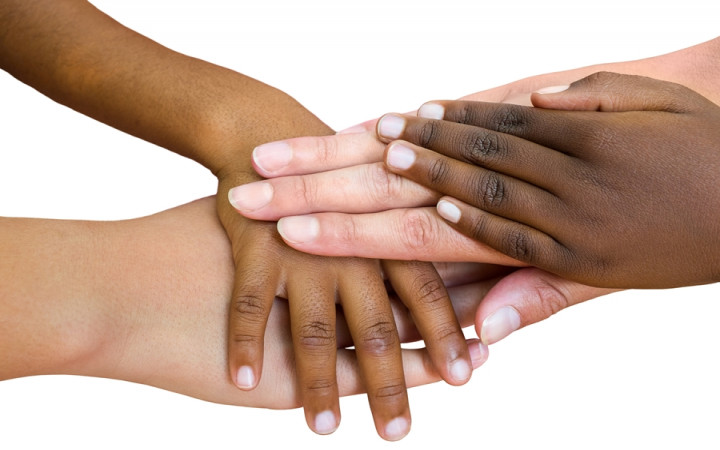Today’s Wonder of the Day was inspired by Moises. Moises Wonders, “How did our skin color change?” Thanks for WONDERing with us, Moises!
Take a look around you. Look at the people in your neighborhood. Look at the kids in your school. Take notice of the people around your town, at the mall, in church, and at sporting events. What do you notice? Perhaps you see that people come in all sorts of different colors. Have you ever WONDERed why that’s so?
Humans have known for a long time that people from different parts of the world often have different skin colors. For example, people who lived in the tropics usually had darker skin than people who lived in colder climates.
Many scientists have studied the human body. This has led them to learn a lot about differences in skin color. Like eye and hair color, skin color is passed through genes from parents to children. Experts have also noticed that people from regions that receive similar amounts of ultraviolet (UV) radiation from the Sun tend to be similar colors.
A person’s skin color is determined by the amount of melanin in their skin. Melanin is a dark brown to black pigment made by special cells called melanocytes. Melanin’s purpose is to help the body function and store the vitamins it needs. Melanin also helps protect people from the Sun’s UV rays.
People who live in the tropics are exposed to more of the Sun’s harmful UV radiation. According to Dr. Nina Jablonski, this makes it harder for the body to store folate. That’s a vitamin that plays an important role in reproduction. As a result, their bodies produce more melanin. This makes their skin darker.
So, why do most northern peoples tend to have lighter skin colors? When people migrated north, they began experiencing lower levels of radiation from the Sun. This led to a deficiency of vitamin D. To take in more vitamin D, their skin needed less melanin so that more UV rays could pass through. As a result, they developed lighter skin over time.
Ultraviolet radiation can also cause skin cancer. Melanin acts as a natural sunscreen. It absorbs these UV rays and protects the skin. Still, experts agree that the needs for folate and vitamin D are the main factors driving melanin production.
Today, people of all races, ethnicities, and nationalities travel and live all over the globe. Your friends at school might have more or less melanin than you do. Members of your family could also produce different amounts. Remember, skin color is never a reason to treat others poorly. Historically, people with more melanin have faced discrimination and bias. What can you do to treat people of all colors with respect in your life?
Standards: CCRA.L.3, CCRA.L.6, CCRA.R.1, CCRA.R.2, CCRA.R.4, CCRA.R.10, CCRA.SL.1




